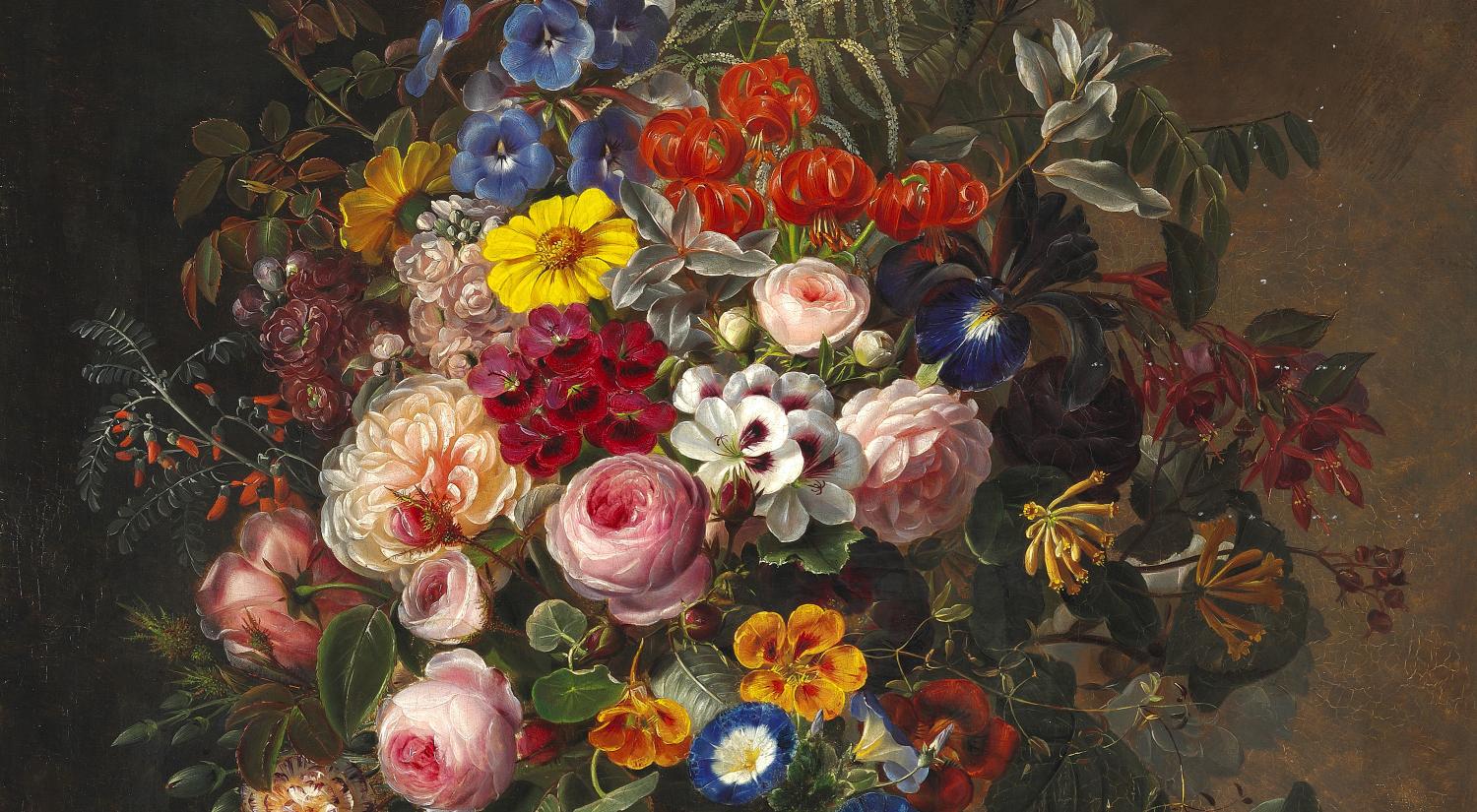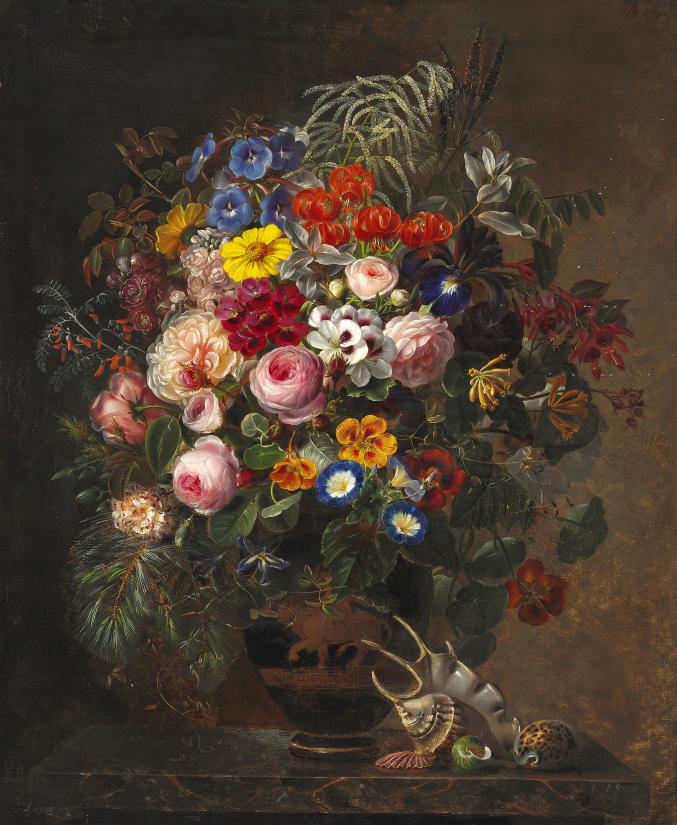Johan Laurentz Jensen, known as ‘Flower-Jensen’, dedicated his life to the portrayal of lavish bouquets. Colourful bouquet of flowers in a Greek vase on a stone ledge with shells is one of his larger and more ambitious flower paintings. It was created after a sojourn in Rome, where Jensen had sought inspiration in the art of classical Antiquity and the light in southern Europe. His interest in classical aesthetics and history is reflected in the piece in the form of the Greek vase with a classical motif standing on the marbled ledge. The cultural ideals of Antiquity thus have a tangible manifestation in the composition. The conch shells next to the vase represent exotic forms from warmer climes, while the magnificent bouquet celebrates the lush, flourishing vigour of the Danish summer.
Jensen has created a vibrant composition that revolves around colours and contrasts and the rich voluptuousness of the individual flowers. The sensuousness of the flowers point to the divine beauty Danish nature but also to mortality and the transient nature of life. It is not the Enlightenment’s systematic study of flora that guides the painting but rather the romantic perspective that succeeded it in 19th-century representations of nature.
Flower studies at Øregaard
Jensen often painted at his country estates north of Copenhagen. Here he carried out studies of individual flowers and parts of plants to include the different species in the large archive he used in his work to create large-scale compositions in oil on canvas.
The setting by Øregaard thus had a significant impact on Jensen’s work. No leaf or flower was too small to be portrayed; in accordance with the prevailing view of nature, all nature’s elements were regarded as equal parts of God’s divine creation. In contrast to contemporary landscape painters, Jensen remained true to the still-life tradition, approaching the divine by arranging flowers and plants in carefully designed compositions based on in-depth studies of nature.
About J. L. Jensen
Johan Laurentz Jensen (1800–1856) was born and raised in Gentofte north of Copenhagen. He was accepted into the Royal Danish Academy of Fine Arts at the age of 14 years and became one of the most accomplished and ambitious painters of the golden age of Danish art during the early 19th century. Jensen specialized in flower paintings and refined his craft during trips to the Netherlands, Paris and Rome. He found inspiration in the Dutch and Belgian painters whose work he saw at the Louvre in Paris, among other places. Johan Laurentz Jensen refined the still life genre to a degree that made him one of the best in his field, not just in Denmark but in an international context.




